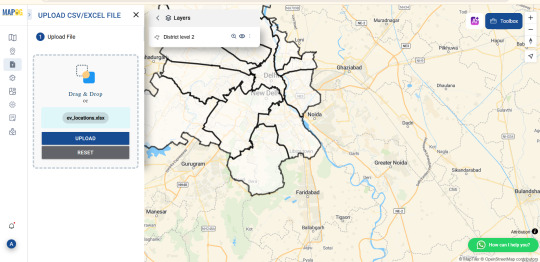#capacity planning software
Explore tagged Tumblr posts
Text
Celoxis Guide to Resource Planning: Optimize Team Capacity Like a Pro

In today’s complex, fast-paced project environments, effective resource planning is critical. Without it, even the most well-designed project plans can fall apart due to overburdened teams, idle resources, and missed deadlines. That’s where Celoxis comes in — a powerful resource planning software solution that simplifies the way you manage people, capacity, and priorities.
With built-in AI-powered intelligence, Celoxis empowers project managers to make smarter decisions, streamline workflows, and align resources with business strategy — all in one unified platform.
Why Resource Planning Matters More Than Ever
As organizations grow and evolve, managing resource capacity across multiple projects, departments, and teams becomes increasingly complex. Common issues include:
Inaccurate forecasting of resource needs
Lack of real-time visibility into workloads
Misalignment between resource availability and project demand
Coordination issues with freelancers or remote teams
Difficulty managing overlapping time zones and team shifts
Celoxis provides an end-to-end solution to solve all these challenges with ease using cutting-edge resource planning software and intuitive resource management tools.
Optimize Capacity with Advanced Resource Planning Software
Celoxis combines capacity planning software with real-time insights to help you balance workloads, eliminate resource conflicts, and ensure optimal utilization.
Key Features That Drive Impact:
1. Real-Time Resource Allocation
Get full visibility into who’s doing what, and when. Quickly spot underutilized or overbooked resources, and make adjustments instantly.
2. Interactive Workload Charts
Visualize and balance workloads across multiple teams and time zones using drag-and-drop functionality.
3. Smart Scheduling and Availability Tracking
Celoxis’ resource scheduling software adapts to working hours, leaves, holidays, and custom calendars—ensuring realistic planning.
4. Forecasting with AI-Powered Insights
Use historical data and real-time inputs to improve capacity planning and project forecasting accuracy.
5. Flexible Resource Assignment
Assign tasks based on availability, skill sets, or departments. Plan for internal staff, part-time workers, contractors, or global teams with ease.
Align Resources with Strategic Priorities
Celoxis ensures that resources are not only utilized efficiently but also aligned with your highest-priority projects. You can manage cross-departmental collaboration, shift team members between tasks, and stay agile—even as priorities change.
The result? Better output, reduced delays, and more successful project outcomes.
A Central Hub for Resource and Project Management
Unlike standalone capacity planning tools or basic spreadsheets, Celoxis offers a complete ecosystem for planning, tracking, and optimizing resource efforts—centralized in one platform. From setting project timelines to tracking task-level progress and capacity, everything is connected.
Seamless Integration with Agile and Traditional Workflows
Whether you follow Agile, Waterfall, or a hybrid approach, Celoxis supports your methodology. Gantt charts, kanban boards, and team dashboards work together to deliver actionable insights for smart resource scheduling and strategic alignment.
Use Data to Plan Better and Avoid Bottlenecks
With detailed reporting and time tracking, Celoxis enables project managers to monitor actual effort vs. planned capacity. This helps refine future forecasts, avoid bottlenecks, and reduce last-minute resource juggling.
Get Ahead with Smart Resource Scheduling Software
From workload rebalancing to future capacity planning, Celoxis provides everything you need to:
Predict and resolve resource conflicts
Track availability across global teams
Improve allocation and task prioritization
Integrate remote, freelance, and part-time staff smoothly
Maintain control over budgets, hours, and deliverables
Why Choose Celoxis?
Trusted by global enterprises for over a decade
All-in-one solution: project tracking, Gantt charts, reporting, and resource management
Easy integration with tools like MS Teams, Slack, and Google Apps
Scalable and customizable to fit teams of all sizes
Final Thoughts
If you’re struggling to align project demand with available team capacity, Celoxis offers the resource planning software you need. With built-in capacity planning tools, smart scheduling, and comprehensive resource management features, you’ll eliminate guesswork, improve delivery speed, and unlock your team’s true potential.
Start planning better. Start delivering smarter. Start with Celoxis.
#resource planning software#capacity planning software#resource management tools#capacity planning tools#resource scheduling software
0 notes
Text
Master Resource Planning and Capacity Management with Celoxis
In today’s complex, fast-paced project environments, effective resource planning is critical. Without it, even the most well-designed project plans can fall apart due to overburdened teams, idle resources, and missed deadlines. That’s where Celoxis comes in — a powerful resource planning software solution that simplifies the way you manage people, capacity, and priorities.

With built-in AI-powered intelligence, Celoxis empowers project managers to make smarter decisions, streamline workflows, and align resources with business strategy — all in one unified platform.
Why Resource Planning Matters More Than Ever
As organizations grow and evolve, managing resource capacity across multiple projects, departments, and teams becomes increasingly complex. Common issues include:
Inaccurate forecasting of resource needs
Lack of real-time visibility into workloads
Misalignment between resource availability and project demand
Coordination issues with freelancers or remote teams
Difficulty managing overlapping time zones and team shifts
Celoxis provides an end-to-end solution to solve all these challenges with ease using cutting-edge resource planning software and intuitive resource management tools.
Optimize Capacity with Advanced Resource Planning Software
Celoxis combines capacity planning software with real-time insights to help you balance workloads, eliminate resource conflicts, and ensure optimal utilization.
Key Features That Drive Impact:
1. Real-Time Resource Allocation
Get full visibility into who’s doing what, and when. Quickly spot underutilized or overbooked resources, and make adjustments instantly.
2. Interactive Workload Charts
Visualize and balance workloads across multiple teams and time zones using drag-and-drop functionality.
3. Smart Scheduling and Availability Tracking
Celoxis’ resource scheduling software adapts to working hours, leaves, holidays, and custom calendars—ensuring realistic planning.
4. Forecasting with AI-Powered Insights
Use historical data and real-time inputs to improve capacity planning and project forecasting accuracy.
5. Flexible Resource Assignment
Assign tasks based on availability, skill sets, or departments. Plan for internal staff, part-time workers, contractors, or global teams with ease.
Align Resources with Strategic Priorities
Celoxis ensures that resources are not only utilized efficiently but also aligned with your highest-priority projects. You can manage cross-departmental collaboration, shift team members between tasks, and stay agile—even as priorities change.
The result? Better output, reduced delays, and more successful project outcomes.
A Central Hub for Resource and Project Management
Unlike standalone capacity planning tools or basic spreadsheets, Celoxis offers a complete ecosystem for planning, tracking, and optimizing resource efforts—centralized in one platform. From setting project timelines to tracking task-level progress and capacity, everything is connected.
Seamless Integration with Agile and Traditional Workflows
Whether you follow Agile, Waterfall, or a hybrid approach, Celoxis supports your methodology. Gantt charts, kanban boards, and team dashboards work together to deliver actionable insights for smart resource scheduling and strategic alignment.
Use Data to Plan Better and Avoid Bottlenecks
With detailed reporting and time tracking, Celoxis enables project managers to monitor actual effort vs. planned capacity. This helps refine future forecasts, avoid bottlenecks, and reduce last-minute resource juggling.
Get Ahead with Smart Resource Scheduling Software
From workload rebalancing to future capacity planning, Celoxis provides everything you need to:
Predict and resolve resource conflicts
Track availability across global teams
Improve allocation and task prioritization
Integrate remote, freelance, and part-time staff smoothly
Maintain control over budgets, hours, and deliverables
Why Choose Celoxis?
Trusted by global enterprises for over a decade
All-in-one solution: project tracking, Gantt charts, reporting, and resource management
Easy integration with tools like MS Teams, Slack, and Google Apps
Scalable and customizable to fit teams of all sizes
Final Thoughts
If you’re struggling to align project demand with available team capacity, Celoxis offers the resource planning software you need. With built-in capacity planning tools, smart scheduling, and comprehensive resource management features, you’ll eliminate guesswork, improve delivery speed, and unlock your team’s true potential.
Start planning better. Start delivering smarter. Start with Celoxis.
#resource planning software#capacity planning software#resource management tools#capacity planning tools#resource scheduling software
0 notes
Text
5th Gen Resource Management: A Game Changer for Project-Based Businesses
Project-based businesses face numerous resourcing challenges, such as talent shortages, increased labor costs, poor billable utilization, and high turnover rates. To navigate these complexities and meet evolving demand, firms must adopt 5th Gen Resource Management.
Curated by industry experts, this eBook covers how a robust 5th generation resource management solution can help organizations harness their workforce’s full potential and deliver exceptional project outcomes.
Know how resource management software can help you achieve more with less resources. Get your free eBook Now!
#resource capacity planning#resource management software#software#resource management#saviom#resourceoptimization
0 notes
Text
During the night of June 1, Ukraine launched an audacious, long-planned drone operation deep in Russian territory, targeting Moscow’s strategic bomber fleet at multiple bases. Ukraine said the mission—codenamed “Spiderweb”—hit 41 bombers, with at least 13 fully destroyed. Reports suggest that Tu-95 and Tu-22M bombers were hit.
Notably, Ukraine apparently chose not to target Russia’s most modern, nuclear-capable Tu-160 bombers, focusing instead on the Tu-95 and Tu-22M, which have been used extensively in conventional cruise missile attacks on Ukrainian cities.
Ukraine reportedly deployed 117 kamikaze-style, first-person-view drones to strike multiple Russian air bases scattered across several time zones, from Murmansk near the Arctic Circle to the Amur region almost 5,000 miles from the Ukrainian border. The drones were covertly transported into Russia over many months, hidden inside wooden cabins mounted on the backs of trucks with remotely operated detachable roofs. Ukrainian intelligence operatives managed to smuggle the drones close to the air bases, and, in some cases, used unwitting Russian truck drivers to do so. Then, at the precise moment, the cabin roofs were opened remotely, allowing the drones to launch toward their objectives using commercial and open-source technology, including 4G LTE networks and ArduPilot software. Each drone had its own dedicated operator, reportedly based at a covert command center near a Federal Security Service (FSB) office inside Russia. According to Politico, Ukrainian intelligence said that some drones relied on artificial intelligence to complete their missions along preset routes when they lost signal, automatically activating their explosives as they reached and identified their assigned targets.
For all its complexity, creativity, and audaciousness, the raid’s immediate impact on Russian operations in Ukraine is likely to be limited. Russia typically employs between seven and 11 bombers per cruise missile salvo, and the loss of a dozen or more aircraft out of a total operable fleet of around 100 long-range bombers will not immediately halt cruise missile attacks on Ukrainian cities. The impact would have been greater in 2024, when Russia relied more heavily on bomber formations to strike Ukraine than it does now. With increased production of drones and ballistic missiles, air-launched cruise missiles have become less critical and are now mainly used for select high-value, stationary targets. Additionally, Ukraine might have hesitated to launch such a raid in 2024, when it was more dependent on U.S. aid and following U.S. concerns over previous attacks on elements of Russia’s nuclear deterrent.
Russia will now have to spend precious resources to harden air bases and other critical facilities by establishing robust, layered counter-drone defenses—combining electronic warfare, anti-air weapons systems, and physical barriers such as concrete hangars. This redeployment is unlikely to substantially impact air cover on the front line, however, given Russia’s relative abundance of air defense systems.
However, the long-term implications of the Ukrainian raid should not be underestimated. The Tu-95 and Tu-22M bombers are no longer in serial production, and their loss reduces Russia’s capacity for long-range force projection. The reported but still unconfirmed damage to A-50 aircraft would further degrade Russian air surveillance and command-and-control capabilities, complicating Moscow’s ability to coordinate complex air operations in a future war against NATO.
Psychologically, the raid is a major blow to Russian prestige and credibility. It undermines the narrative of Russian military prowess and demonstrates Ukraine’s ability to strike at the heart of Russian military power. The operation also illustrates once again that Ukraine does not need to have an equivalent arsenal to Russia’s: Small, low-cost platforms can inflict serious damage on high-value targets.
Yet raids alone do not win wars. Ultimately, the trajectory of the war in Ukraine will be determined by how well Ukraine can continue to attrit Russian forces along the front line in the coming months, thereby changing the Kremlin leadership’s mind about whether it is worthwhile to pursue the war given the high costs and limited gains. That said, last weekend’s significant loss of hard-to-replace strategic assets far from the front may, in the best outcome, nudge the Kremlin a bit closer to seeing that the costs of the conflict are becoming too much for Russia and the regime.
While some observers have heralded this operation as the advent of a new type of warfare, its true significance lies elsewhere. What the Ukrainians have done is adapt a classic tactic of European warfare—the military raid—to the 21st century.
Once the principal form of military engagement across Europe, raiding warfare typically unfolds in several phases: covert infiltration, a surprise assault, and a swift withdrawal. Underdogs have often employed the tactic to maintain pressure on a stronger enemy. The dawn of the modern raid can be traced back to British Prime Minister Winston Churchill’s order to his minister of economic warfare, Hugh Dalton, to “set Europe ablaze” following the devastating defeat of British forces in France in 1940; to that end, Dalton established the Special Operations Executive for sabotage and resistance in German-occupied Europe. But history abounds with other examples of such audacious operations. In October 1757, during the Seven Years’ War, Austrian forces under Andras Hadik executed a daring raid on Berlin using a small, fast-moving contingent of mostly Hungarian hussars. Despite being outnumbered by the city’s garrison, Hadik’s troops surprised the defenders, briefly occupied Berlin, and extracted a substantial ransom before withdrawing.
Modern raids involving air power were regularly employed for the first time in World War II. In November 1940, the British Royal Navy launched a surprise attack on the Italian fleet in the harbor of Taranto, Italy, using only 21 obsolete Fairey Swordfish biplanes from the aircraft carrier HMS Illustrious. The raid disabled three Italian battleships and damaged several other vessels, demonstrating how a small force in the air could achieve outsized operational effects. Similarly, in March 1942, British commandos assaulted the heavily defended dry dock at Saint-Nazaire, France, using a destroyer packed with explosives to deny the Germans a crucial facility for their battleships. And then there was the German Luftwaffe’s Poltava raid on the U.S. Air Force in 1944, when German fighters targeted Allied bomber formations stationed in Ukraine and inflicted heavy casualties and aircraft losses.
At its most basic level, therefore, Ukraine’s Operation Spiderweb belongs to a long tradition of daring raids. It does not mark the dawn of a new age—it is simply the latest adaptation of an enduring tactical approach.
On the one hand, however, the raid illustrates that high-impact, long-distance raids are made easier by new technologies like drones. Any assumption that military assets and infrastructure deep in the rear are immune from attack was just shattered by Ukraine. Russia will now have to spend precious resources hardening air bases and other critical facilities, as well as disperse its assets to reduce their vulnerability. The need for robust, layered anti-drone defenses—combining electronic warfare, kinetic interceptors, and physical barriers—will also become an urgent priority. The distinction between the frontline and the rear has blurred.
The raid also illustrated that a non-nuclear power could raid the strategic assets of a nuclear power. The only feasible way for Kyiv to do so safely was to consciously avoid targeting certain assets. The raid’s limitations—both in terms of the targets chosen and the damage inflicted—highlight the constraints imposed by the risk of escalation. Ukraine’s restraint in targeting nuclear-capable bombers and other sensitive infrastructure serves as a reminder that, in an era of nuclear-armed adversaries, even the most successful raids must be carefully calibrated to avoid crossing invisible but potentially disastrous red lines.
Russia’s nuclear doctrine, updated in late 2024, explicitly reserves the right to use nuclear weapons in response to attacks on its territory by a non-nuclear state that is backed by a nuclear-armed one. Although Ukraine is not directly backed in any strict sense by a nuclear state, the presence of NATO support and the risk of Western intervention looms large in Russian strategic thinking. The Kremlin’s repeated nuclear threats—including tactical strikes, high-altitude detonations, and missiles fired on European capitals—have been a constant feature of the war, even as most of the Kremlin’s supposed red lines have been crossed without triggering nuclear use.
This dynamic creates a paradox: the more effective Ukraine’s raids, the greater the risk of a disproportionate escalation by Russia. For some observers in the West, the fear of a severe Russian reaction almost overshadows the operational success of the raid itself. This plays into a culture of Western self-deterrence in response to Russian threats, whereby Russia actively uses nuclear and conventional saber-rattling not merely in a neutral strategic context, but also as a deliberate tool to manage and constrain Western behavior.
Operation Spiderweb will enter military history as one of the more daring raids and one of the first conducted with remotely controlled strike drones. But it does not herald the dawn of a new age. Rather, it is the latest iteration of the classic raid, adapted to the realities of 21st century warfare under the nuclear threat.
25 notes
·
View notes
Text
Exotic doctrine theory: Grappling & Booster-fu
Source of the song is "If you Dare", anime is Orguss 02 episode 1
When all conventional means of machine combat are forclosed, only unconventional means remain: This is what seperates the aces from the jobbers, bitches: the capacity to improvise.
A fighter pilot will jam the WEZ, that's weapon engagement zone: the minimum arming range of a missile before it will hurt both the enemy and yourself -- but what about mech pilots?
You get up in their BAZ; the Ballistic Attack Zone, with the tip of the barrel behind you. How do you stay safe up close like this?
You ever seen any soft-bodied octopus or starfish get into a crab?
They have hard bodies and are all soft underneath, like a mech. They're not impervious.
Why? Any hard body is made of levers:
Drive any joint to its limit and you have an instant fulcrum to rip at the inner structures and shatter the outer form.
But then what?
No blades? No pile bunkers? No problem.
Ground talons. Rollers. Grappling hooks. Joints.
The sheer fucking mass and density of your armour plating.
Your whole body is a weapon.
Some of you make 3:1 against your mass with your boosters.
That's a lot of energy and if it has nowhere to go very bad things happen.
Some of you can do this with neural implants but you've got biofeedback out of the wazoo to contend with, which is why so many of you go twinkly eyed with overload daze out when you lock up with an opponent.
The smart among you are already running a specialist grips and inceptors in your cockpits, so you can dip out of the feedback when you need to and you're TAZ compliant: that's TORSION, ASPECT and ZONE controller, so named for the work of a Dr Senerchia, a fighter who deserved better than they got, and a treasure to us all.
So what does that mean to you?
A mixture of special software, and a pair of extra thumbsticks for your index fingers on your grips above the triggers.
Those of you familiar with loaders or cargo-work will find it familiar.
The rest of you: they're there to override and guide cueing information based entirely on brutal trial and error that'll make the size or weight of your frame irrelevant in CQB.
You can't rely on fixed solvers and playback to do the work for you with some existing motion-plan: You need to invent a new one on the fly using all of your fine control inputs.
So how is this relevant to you?
A Class A heavy support is fucked against a Class F attacker surely with the height difference and loadout, right? That's fifty tons of mass and nine meters of stature apart.
But watch an A slam its talons into the dirt, wrap the F with its wire anchors, and then perform a boost suplex, knock its barrels under the deflection plating of the other guy and follow-up up with a full sabot alpha-strike at point blank.
Any trainer worth their salt will teach you this shit.
You should know how to grapple with your sisters, and to practice regularly in and out of the cockpit. You need to get familiar with how bodies roll across eachother in motion.
You get lucky and you'll get some special training with oxytocin boosting mucus membrane massage and carotid restraint to simulate g-loc until you see stars to keep it memorable.
Have fun out there.
Class dismissed.
37 notes
·
View notes
Text






Internal Family Skills, part two! This is the Firefighter (FFR) Attribute: Your capacity to resolve crises and take deliberate action in the world. Its six Skills are:
Corpsework
Deliberation
Kagandahang-Loób
Master Plan
Machine Spirits
Utang
[ Manager | Exile | Self ]
Corpsework
Practice self-care and first aid. Understand and respond to the realities of meat.
COOL FOR: Street Medics, Neurasthenics, Trans-sexuals
If you've grown up accustomed to the life of the mind and little else, Corpsework fills in the gaps. You don't need to be attentive to "hunger" or "exhaustion" or "pain": all you need to know to keep your Health pool up is the multitude of ways by which life departs from the human body. In addition to patching up wounds and scrapes, Corpsework cares for the body by routine and procedure. It keeps you clean, fed, and medicated even in the depths of depression and puts you to bed out of the knowledge that revenge bedtime will ruin your tomorrow.
At high levels, Corpsework allows you to take care of your body and others in more and more extreme conditions. You may not be able to fix the problem, but you can keep a problem stable long enough to get the patient to someone who can help. On the other hand, you'll identify health risks everywhere: every surface is potentially contaminated, every meal an exercise in nutritional "balance". But if your Corpsework is too low, you'll blunder through the world in a feeble haze, and if you do notice infirmities, you won't know what to do about them.
Deliberation
Comprehend arguments. Logic it out.
COOL FOR: Academics, Social Maladapts, the Overcautious
Deliberation is your inner skeptic. It's the voice that gets you to slow down your thought processes and ask, "Is that true?" It's great for getting good grades, figuring out the reputability of a text, identifying disordered thought patterns, not getting mad at posts online, and asking yourself if you can really jump across that gap. For you, however, it also occupies the unenviable position of trying desperately to figure out what other people mean through sheer brute-force semantics and abstract knowledge of social convention.
At high levels, Deliberation makes you a lean, mean, reasonin' machine. High on reason, you'll become obsessive about clarity at the cost of social graces, and prudent at the cost of your entire ego when you do inevitably make rash decisions. But with low Deliberation, you'll make rash decisions all the time and generally show yourself as the idiot you're so scared of being.
Kagandahang-Loób
Demonstrate mercy and forgiveness in an entropic universe. Go above and beyond.
COOL FOR: Creditors, Parents, Moral Philosophers
Kagandahang-Loób is the beauty of the will: when Kapwa recognizes the inherent togetherness of people, Kagandahang-Loób inspires generosity to others and forgiveness of debts. Kagandahang-Loób is necessary for being a good person to yourself and others: without its migitating presence, relationships would be crushed under the weight of debts that can never truly be repaid, paradoxically hastening the decay that inspires Utang in the first place. Kagandahang-Loób is a necessary moral compass -- and a powerful tool for building relationships on mutual support rather than indebtedness.
With high Kagandahang-Loób, you'll be able to easily make friends and inspire them to new heights of reciprocal generosity: through teamwork, you may even be able to fly. However, you'll find yourself easily persuaded that wrongdoers had good reasons and find it hard to take decisive action against them. With low Kagandahang-Loób, however, you'll be a literal and emotional miser, ranting about how much everyone owes you.
Machine Spirits
Interact with hardware and software. Listen to and respect your tools.
COOL FOR: Experiential Learners, Digital Natives, Girls Who Read the Manual
You are terminally non-mechanical; you balk without a user interface. If you're not constantly keeping your hand in with classroom assignments, you couldn't improvise outside of stopgap solutions. Still, technology is an essential part of humanity, and for that, you have Machine Spirits. This Skill uses humanity's great compression algorithm, ritual, to understand what a machine is doing, even if you don't understand the why; you learn from your elders (tutorial webpages), approach the machines with respect (following the steps), and enjoy a successful partnership with machines (your devices, generally speaking, function).
At high levels, Machine Spirits makes you obsessive and insecure: do you have a full collection of right tools for vaguely-defined right jobs? Can you get your laptop to do what you want if you spend another hour fucking with it? Have you stored too much of your knowledge outside of your own brain? At low levels, though, your clothes will fall apart, your bicycle will break, and your toilets will clog -- and you definitely don't have the money not to care.
Master Plan
Figure out how to achieve your goals. Control yourself and others.
COOL FOR: Functioning Executives, Evil Geniuses, The Goal-Oriented
Master Plan is a Skill of agency and delegation. Why try to take on the world yourself when you can get other people to take it on for you? Why solve other people's problems, when you can teach them how to solve their own and yours? Master Plan creates causal chains between your starting point and your goal -- not only does it show you the grand road you need to take, it'll give you options for the low road or the high road. Understanding how best to achieve your own wants also teaches you how to incentivize others, and Master Plan is more than happy to use others' wants to achieve your designs.
At high levels, Master Plan makes you arrogant -- you'll assume you know what's best for everyone and that your victory is already assured, and you won't know how to give others dignity or deal with your own failure. But without it, you'll succumb to learned helplessness, reliant on others' plans and too afraid of disturbing them to better your own position.
Utang
Keep track of debt and obligation. Employ financial literacy and historical materialism.
COOL FOR: Debtors, Negotiators, Political Animals
Utang is the understanding of debt; in you, it's an overgrown philosophical awareness that there ain't no such thing as a free lunch. That literal economic reality is rooted in the thermodynamic principle it famously describes: living as we do in an entropic universe, others expect debts to be repaid, and your own recognition of entropy creates the desire to repay debts. Not only does Utang manage your money, it opens you up to realpolitik on both literal and interpersonal levels. Utang gives you an idea of what people want, explaining the concerns that govern political action and what you can do for others to make both of you happy.
At high levels, Utang will make you see ulterior motives everywhere; treating everything as a transaction that must be balanced will ruin your personal relationships with bookkeeping and your politics with pessimism. Without it, though, you'll assume that politics and community boil down to stark moral principles -- and without a handle on your debts, you'll be too broke and alone to be able to hold to any principles of your own.
Notes
The visual design for Master Plan is based at least in part on the dual meaning of the Latin word textus, meaning both "weaving" and "narrative".
Thanks again to "Loób and Kapwa: An Introduction to a Filipino Virtue Ethics" (Reyes 2015).
25 notes
·
View notes
Text
AU Space Shuttle Enterprise

Circa 1985 to 1987
From my Alternative History Post (link) this is how the Space Shuttle Enterprise evolved from the 4th operational orbiter in 1985 to the prototype unmanned shuttle.
More History on the Shuttle:
• April 1983: Enterprise is returned to Palmdale for her disassembled and rebuild.
• As a weight saving measure her mid-fuselage is returned to Convair for a complete rebuild to bring it inline with OV-103 and OV-104.
• to further lighten her frame, her aft-fuselage is rebuilt with similar materials as her sisters.
• Engineers at Rockwell suggests rebuilding or replacing her wings as well but NASA doesn't have room in the budget.
• May 1985: at long last, Enterprise is rolled out and joins the fleet. She weighs slightly less than Columbia. Her main issue is her wings are heavier and weaker than the other Orbiters.
• September 1985: STS-21 is Enterprise's first mission
• 1987: During the Shuttle hiatus following the Challenger Disaster, she went through a mini refit that saw her exterior markings change. (NASA in this timeline returned to the Meatball logo sooner than in the OTL)

Circa 1988 to 1993
• April 1988: STS-30 is Enterprise's first launch following the hiatus.
• December 1993: following STS-61, Enterprise is retired due to being the oldest in the fleet. Endeavour takes her place in the fleet.
• June 1994: Enterprise is flown to Dulles Airport, Washington DC, and is given to the Smithsonian for eventual display when the Steven F. Udvar-Hazy Center is built. NASA retains the option recalled her if needed.
• 1998: NASA studies modifying the Shuttle-C software to work on the Space Shuttle and potentially using Enterprise as a reusable Shuttle-C. The reasoning behind this option this configuration would be a cheaper alternative to the X-33 program. However, while the shuttle could be retrofitted with the software, the shuttle would have less cargo capacity than the X-33 and still required use of expensive legacy launch facilities (ie VAB and LC-39). The study ends with only the software in a beta state.
• December 2003: Steven F. Udvar-Hazy Center is opened with Enterprise being one of its major exhibits.
• November 2003: the Shuttle-C software is used to return STS-118 Columbia to Earth and with critical damage to her structure (mainly her port wing and some internal damage from a collapsed landing gear).
• May 2004: NASA recalls Enterprise to replace Columbia.
• August 2004: initial plans are to return her flight, unmodified. However, NASA develops the Shuttle-C software further and changes it's name to A.S.Tr.O.S (Autonomous Space Transport Operating System).
• New wings! Enterprise is fitted with new wings which are of a modified design and lighter and stronger than the wings of her sisters. With other upgrades and modifications, she is slightly lighter than her younger sisters.
• Some within NASA joking refer to her as Enterprise-A, as a reference to Star Trek.
• September 2006: to commemorate the 30th anniversary of her unveiling to the media, Lockheed-Rockwell rolls her out of their Palmdale facility to rechristen the Shuttle. In attendance, Leonard Nimoy, George Takei, Nichelle Nicholas, Walter Koenig, Christopher Doohan and Rod Roddenberry.
- when asked by the media, Leonard remarked she is still a sight to behold and is glad she will continue her mission of exploration.

Enterprise A (unmanned)
• July 2006: to test the A.S.Tr.O.S. during a return to earth and landing, a new series of Approach and Landing Tests (ALT) were conducted with NASA's 747 SCA (N905NA) at the Dryden Flight Research Center, Edwards Air Force Base. 15 flights are flown to put the software in the real world, with two astronauts on board to step in when needed. Barring some higher than normal landing speeds, the software passes all of its objectives.
• It should be noted, while the rebuilt Enterprise is mainly used as an unmanned orbiter, this is a misnomer. It is more accurate to call her a hybrid shuttle. NASA has the option to convert her back into a manned shuttle if desired or needed.
- This nearly was used in 2015 during STS-154. Space Shuttle Atlantis was after conducting maintenance/upgrades on the Hubble Space Telescope (HST), the crew was unable to disconnect the shuttle from the telescope. CTS-48 Enterprise was already on LC-39B for a cargo mission to the International Space Station. All that was needed was to remove supplies from the payload bay and reinstall the seats in her crew space. Fortunately, this rescue wasn't needed as the Astronauts conducted an unscheduled EVA and manually disconnected the Shuttle from the HST.
• November 2008: first flight of Enterprise-A (CTS-11)
• When Columbia was given a cosmic restoration for her display, the first set of wings from Enterprise was used to replace her damaged one.
• 2019: Enterprise is retired for the final time following CTS-74.
• 2020: Enterprise is on display at Space Center Houston with the restored Star Trek Galileo Shuttlecraft prop.
Original artwork by bagera3005: link, link, link
#Space Shuttle#Space Shuttle Enterprise#Enterprise#OV-101#Orbiter#NASA#Space Shuttle Program#Enterprise-A#alt history#Alternative History#AU#Complete Shuttle Fleet Timeline#my post
95 notes
·
View notes
Text

Updated B-52 electronic warfare suite will be tested in flight in 2024
Fernando Valduga By Fernando Valduga 03/29/2024 - 10:36 in Military
Flying through the skies since the 1950s, the B-52 Stratofortress is a U.S. Air Force (USAF) workhorse and a lasting symbol of American military power. The eight-engine giant has unique capabilities unparalleled to any other American warplane - which is why, after more than 70 years of service, it continues to play a vital role in the defense and national security strategy of the U.S. And thanks to a collaboration between L3Harris and USAF, this iconic aircraft is prepared to remain ready for the mission against highly sophisticated emerging threats in the coming decades.
Under a 10-year contract worth $947 million granted in 2021, L3Harris is upgrading and improving the AN/ALQ-172 electronic war self-protection system (EW), which protects the B-52 and air crews from a wide range of electronic threats. Our current work is based on decades of experience in providing critical technology as a Manufacturer of Original Equipment of the AN/ALQ-172 systems for the B-52 fleet. And combined with other ongoing modernization efforts, these updates will increase the relevance and reliability of the B-52 by the 2050s.

L3 Harris AN/ALQ-172 systems.
"Our opponents continue to evolve, facing advanced and far-reaching threats that challenge our ability to operate in contested environments," says Robert "Trip" Raymond, USAF's Program Leader for EW Technology Development at L3Harris. "It is essential that we provide our B-52 crew with the necessary tools to keep the B-52 relevant, lethal and survivable as the backbone of the strategic bomber force of the United States."
The effort of modernization and support - ALQ-172 Maintenance and Reliability System (MARS) - intends to do exactly that, increasing the average time between failures due to its modular design, while further improving the performance, maintenance capacity and reliability of the system. Thanks to an integrated and improved radio frequency system, crews will be able to simultaneously combat multiple radar threats that interfere with aircraft operations. And by replacing analog systems with more economical software solutions, USAF will be able to reduce the size of B-52 crews from 5 to 4. This frees up resources for additional mission-critical activities.
Ultimately, the updates will further help USAF in its Global Attack Mission and strengthen the effectiveness of the B-52 in modern warfare, while making future upgrades cheaper and easier.
"We are implementing affordable solutions that not only reduce costs, but also provide crews with more advanced protection against the most sophisticated threats detected by radar," said Jimmy Mercado, Program Director at L3Harris. "All this results in a more modern, efficient and effective aircraft, ready to dominate the future struggle."
USAF plans to conduct a test flight with the new electronic warfare capabilities of the B-52 in 2024.
Tags: Military AviationBoeing B-52H StratofortressEW - ELECTRONIC WARL3HarrisUSAF - United States Air Force / U.S. Air Force
Sharing
tweet
Fernando Valduga
Fernando Valduga
Aviation photographer and pilot since 1992, he has participated in several events and air operations, such as Cruzex, AirVenture, Dayton Airshow and FIDAE. He has works published in specialized aviation magazines in Brazil and abroad. He uses Canon equipment during his photographic work in the world of aviation.
Related news
AERONAUTICAL ACCIDENTS
VIDEO: Russian Su-27 fighter in flames falls into the sea near Sevastopol
29/03/2024 - 09:43
An F-16 fighter from the Norwegian air force lands at a Turkish air base in the Turkish city of Konya, in Central Anatolia. Norway, a member of NATO, will donate F-16 fighters to Ukraine, whose forces are involved in a difficult counter-offensive against Russia. (Photo: AP / Burhan Ozbilici)
MILITARY
Putin threatens to attack NATO air bases that host Ukrainian F-16 fighters
28/03/2024 - 21:56
MILITARY
Retirement from F-22 in 2030 is unlikely, since USAF intends to spend $7.8 billion on it before that
28/03/2024 - 21:16
MILITARY
IMAGES: Inaugural flight of the first light combat aircraft Tejas Mk 1A
28/03/2024 - 18:27
Dassault Rafale Fighter. (Photo: Katsuhiko Tokunaga)
MILITARY
France tests Thales' IRST system update for Rafale F4.2 update
28/03/2024 - 15:00
MILITARY
Dutch drone fleet MQ-9A Reaper will receive tactical updates
28/03/2024 - 14:00
37 notes
·
View notes
Text

Bethesda Softworks will close Redfall developer Arkane Austin, Hi-Fi RUSH and The Evil Within developer Tango Gameworks, as well as Alpha Dog Games and Roundhouse Studios, according to a companywide email sent out by Microsoft Gaming president of game content and studios Matt Booty this morning.
Full email
Today I’m sharing changes we are making to our Bethesda and ZeniMax teams. These changes are grounded in prioritizing high-impact titles and further investing in Bethesda’s portfolio of blockbuster games and beloved worlds which you have nurtured over many decades.
To double down on these franchises and invest to build new ones requires us to look across the business to identify the opportunities that are best positioned for success. This reprioritization of titles and resources means a few teams will be realigned to others and that some of our colleagues will be leaving us.
Here are the changes going into effect:
Arkane Austin – This studio will close with some members of the team joining other studios to work on projects across Bethesda. Arkane Austin has a history of making impactful and innovative games and it is a pedigree that everyone should be proud of. Redfall‘s previous update will be its last as we end all development on the game. The game and its servers will remain online for players to enjoy and we will provide make-good offers to players who purchased the “Hero” downloadable content.
Alpha Dog Studios – This studio will also close. We appreciate the team’s creativity in bringing DOOM to new players. Mighty DOOM will be sunset on August 7 and we will be turning off the ability for players to make any purchases in the game.
Tango Gameworks – Tango Gameworks will also close. We are thankful for their contributions to Bethesda and players around the world. Hi-Fi RUSH will continue to be available to players on the platforms it is today.
Roundhouse Games – The team at Roundhouse Games will be joining ZeniMax Online Studios (ZOS). Roundhouse has played a key role in many of our recent game launches and bringing them into ZOS to work on The Elder Scrolls Online will mean we can do even more to grow the world that millions of players call home.
With this consolidation of our Bethesda studio teams, so that we can invest more deeply in our portfolio of games and new IP, a small number of roles across select Bethesda publishing and corporate teams will also be eliminated.
Those whose roles will be impacted will be notified today, and we ask that you please treat your departing colleagues with respect and compassion. We will provide our full support to those who are impacted in today’s notifications and through their transitions, including severance benefits informed by local laws.
These changes are not a reflection of the creativity and skill of the talented individuals at these teams or the risks they took to try new things. I acknowledge that these changes are also disruptive to the various support teams across ZeniMax and Bethesda that bring our games to market. We are making these tough decisions to create capacity to increase investment in other parts of our portfolio and focus on our priority games.
Bethesda remains one of the key pillars of Xbox with a strong portfolio of amazing games and thriving communities. As we look to the future, there is an impressive line-up of games on the horizon. In 2024 alone we have Starfield “Shattered Space,” Fallout 76 “Skyline Valley,” Indiana Jones and The Great Circle, and The Elder Scrolls Online‘s “Golden Road.” As we align our plans and resources to best set ourselves up for success in this complex and changing industry, our teams across Arkane Lyon, Bethesda Game Studios, id Software, MachineGames, ZeniMax Online Studios, and the Bethesda publishing and corporate teams will be well-positioned to build new IP, explore new game concepts, and expand on our existing franchises.
—Matt
Messages from each studio
Arkane Austin

Tango Gameworks

Alpha Dog Games

#Microsoft#Zenimax Media#Bethesda Softworks#Arkane Austin#Tango Gameworks#Alpha Dog Games#Roundhouse Studios#Zenimax Online Studios#Redfall#Hi Fi Rush#The Evil Within#Ghostwire Tokyo#video game#Xbox Series#Xbox Series S#Xbox Series X#PC
32 notes
·
View notes
Text
Alright gang. We’re gonna talk about the project of mine that’s least likely to come to fruition because of how complicated it would be to make it. And that my friends is ‘(V)Flower the Punk Magical girl’.
First comes the Licensing. First I have to have permission from Crypton, Yamaha, twindrill, the guys who made CeVIO, the guys who made Synthesizer V, and various Utau creators. It’s not the actual getting permission part I’m worried about it’s the way I believe some characters I’m afraid could strait up not be used in the way I need them to be used. Example: Hatsune Miku. I don’t think Crypton would let me depict her as a villain if I’m going to use her. Even though she would be a miss guided character.
Second issue: music. Very simple. Some artists are less likely to work on a project like this than others and won’t be likely to let me use their music.
Third issue: language and making the characters talk. Most of the characters I plan on using for this project don’t have talk voicebanks(Oliver, Yohio, The Kagamines, Solaria, Kevin, Sweet Ann, Kasane Teto, Gumi, Utane Uta(Defoko), Momone Momo, Etc). Not only that I have to either make this in Japanese or English and because a lot of the voicebanks don’t normally have the capacity to do both languages in an understandable way it would be incredibly expensive and time consuming to do the tuning and actually talking.
Forth issue: Animation. It would be animated with 2D for the characters and 3D for the Setting. I hope why everyone knows why that’s really hard right.
Fifth: The audience. Out of all the vocaloid characters to get a potential movie VFlower is among the least likely because she’s not Miku. Anything but The Crypton Loids and Otomachi Una. It’s simply wouldn’t sell enough in either of its demographics to make up for the cost of making it. And considering that the western vocaloid market is smaller than the eastern market I’m not hopeful that a vocaloid movie would sell well here.
Sixth issue: Budget. Let’s be real a project like this wouldn’t be given a working budget and lots of people would have to work overtime to make this a functional product. I really don’t want that to happen to my projects even if the animation is being done by a different studio.
Seventh issue: The AI debate. Vocaloid and other vocal synthesizer softwares are often confused for Ai products instead of instruments. Many people would boycott the project because there’s a lot of people who don’t know this is voiced by Vocal synths(an instrument that’s made pretty ethically) and not AI generated voices(unethical and lifeless). Which would add to the possibility of it not making any money at all.
I’ll reblog this again tomorrow with the plot of the plot so yall can make fanfic based off the premise.
#vocaloid#cevio#synthesizer v#synthv#Utau#vocal synthesizers#hatune miku#kagamine rin#kagamine Len#Kasane Teto#Megapoid Gumi#Solaria#kevin synthv#utane uta#defoko#momone momo#vflower#writing#scrapped writing
9 notes
·
View notes
Text
India’s Business Goldmine: Strategies for Foreign Investors

As global markets evolve, India emerges as a standout destination for savvy investors seeking to capitalize on a rapidly expanding economy and diverse growth opportunities. Known for its impressive economic growth, burgeoning middle class, and progressive reforms, India is becoming a magnet for foreign investment. To harness this potential, it’s essential for investors to understand the nuances of India’s market and craft strategies that align with local dynamics. This guide explores effective strategies for entering and thriving in India’s business landscape, offering insights into how to navigate the opportunities and challenges that come with this vibrant market.
1. Understanding India’s Economic Landscape
Economic Growth and Stability
India’s economic trajectory is marked by robust growth and increasing stability. Several key factors contribute to its appeal:
- Consistent GDP Growth: India has demonstrated impressive GDP growth rates, outpacing many developed nations. This growth is driven by domestic consumption, infrastructure development, and a burgeoning services sector.
- Economic Reforms: Recent economic reforms, including the implementation of the Goods and Services Tax (GST) and liberalization of Foreign Direct Investment (FDI) policies, have streamlined business operations and reduced entry barriers, making India more accessible for investors.
Demographic Advantages
India’s demographic profile offers significant opportunities for investors:
- Young Population: With a median age of around 28 years, India boasts a youthful workforce and an expanding consumer base. This demographic advantage drives demand for a range of products and services.
- Increasing Urbanization: Rapid urbanization is creating substantial opportunities in real estate, infrastructure, and consumer goods. As more people migrate to urban areas, there is growing demand for housing, services, and infrastructure development.
2. Identifying Key Sectors for Investment
India offers a range of sectors with high growth potential. Here are some key areas to consider:
Technology and Digital Economy
-IT and Software Services: India is a global leader in IT and software services, with companies like Tata Consultancy Services (TCS) and Infosys setting high standards. The country’s strong IT infrastructure and skilled workforce make it an ideal location for tech investments.
- Digital Transformation: The rise of digital services, including fintech, e-commerce, and mobile applications, is transforming the market. Government initiatives like Digital India are further boosting this sector, providing opportunities for investment in digital solutions and technology-driven services.
Healthcare and Pharmaceuticals
- Healthcare Infrastructure: There is a growing demand for healthcare services and facilities in India, driven by increasing health awareness and a rising population. Investment opportunities exist in building hospitals, clinics, and specialized medical centers.
- Pharmaceuticals: India is a major global player in the production of generic drugs. The pharmaceutical sector presents opportunities for investment in drug manufacturing, research and development, and biopharmaceuticals.
Renewable Energy
- Government Targets: India has set ambitious goals for expanding its renewable energy capacity, including solar and wind power. Initiatives such as the National Solar Mission and the Wind Energy Mission offer opportunities for investment in renewable energy projects.
- Sustainability Investments: Investments in energy-efficient technologies and sustainable practices are increasingly valued. Opportunities include developing solar parks, wind farms, and energy storage solutions.
3. Crafting a Strategic Market Entry Plan
Conduct Thorough Market Research
Understanding the Indian market is crucial for making informed investment decisions:
- Consumer Insights: Conduct detailed research to understand local consumer behavior, preferences, and spending patterns. Tailor your products or services to meet the specific needs of Indian consumers.
- Competitive Landscape: Study the competitive environment to identify potential opportunities and threats. Understanding your competitors’ strategies and market positioning can help you gain a competitive edge.
Localization and Adaptation
Adapting your business strategy to the Indian market is essential for success:
- Cultural Sensitivity: India is culturally diverse, with significant regional differences. Adapt your marketing and branding strategies to align with local customs, languages, and traditions.
- Product and Service Adaptation: Modify your offerings to fit local needs and preferences. Ensure your products and services comply with Indian regulatory standards and resonate with the target audience.
4. Navigating the Regulatory Environment
Understanding FDI Regulations
Foreign Direct Investment (FDI) regulations are crucial for entering the Indian market:
- FDI Policies: Familiarize yourself with sector-specific FDI policies. The Indian government has relaxed norms in several sectors, but some areas still require regulatory approvals.
- Approval Processes: Some investments may require approval from the Foreign Investment Promotion Board (FIPB) or other regulatory bodies. Ensure you understand and comply with all regulatory requirements to avoid delays and complications.
Licensing and Permits
Obtaining the necessary licenses and permits is a critical step in establishing operations:
- Business Registration: Register your business with the Ministry of Corporate Affairs (MCA) and obtain a Permanent Account Number (PAN) for tax purposes.
- Industry-Specific Licenses: Depending on your sector, additional licenses or permits may be required. For example, the pharmaceutical sector requires specific approvals from the Drug Controller General of India (DCGI).
5. Building Strong Local Partnerships
Forming Strategic Alliances
Collaborating with local partners can enhance your market entry strategy:
- Local Expertise: Partner with local businesses or consultants who have market knowledge and regulatory expertise. Their insights can help navigate local challenges and identify growth opportunities.
- Joint Ventures: Consider joint ventures as a way to leverage local resources and share risks. Joint ventures can provide valuable market insights and facilitate smoother market entry.
Networking and Relationship Building
Building strong relationships within the industry is beneficial:
- Industry Associations: Engage with industry associations and trade organizations to build networks and gain insights into the market.
- Local Business Groups: Participate in local business groups and forums to connect with key stakeholders and potential partners. Building a strong network can open doors to new opportunities and collaborations.
6. Leveraging Government Support and Incentives
Government Initiatives
The Indian government offers various initiatives to support foreign investment:
- Make in India: This initiative aims to boost manufacturing and attract investment by improving the ease of doing business and providing incentives for manufacturing projects.
- Startup India: This program supports startups with financial incentives, simplified regulatory processes, and innovation promotion.
Investment Incentives
Explore the incentives and benefits available to foreign investors:
- Tax Benefits: Certain sectors and regions offer tax incentives, including exemptions and reductions on corporate taxes and customs duties.
- Investment Zones: Special Economic Zones (SEZs) and other investment zones provide benefits such as tax breaks, infrastructure support, and streamlined procedures.
7. Managing Risks and Challenges
Regulatory and Compliance Risks
Navigating India’s regulatory environment can be complex:
- Regulatory Complexity: Stay informed about regulations at both central and state levels, including tax laws, labor regulations, and environmental standards. Compliance is crucial to avoid legal issues and penalties.
- Political and Economic Risks: Monitor the political and economic climate, as fluctuations can impact investment outcomes. Engaging with local experts and advisors can help manage these risks effectively.
Infrastructure and Logistics
Addressing infrastructure and logistics challenges is essential for smooth operations:
- Infrastructure Development: Evaluate the impact of infrastructure on your business operations. Challenges in transportation, warehousing, and logistics can affect supply chains and operational efficiency.
- Logistics Solutions: Develop robust logistics strategies to address challenges related to distribution and transportation. Partner with reliable logistics providers to ensure efficient operations.
India offers a wealth of opportunities for foreign investors, driven by its dynamic economy, youthful population, and expanding market. By understanding the economic landscape, identifying key sectors, and crafting a strategic market entry plan, investors can effectively tap into India’s growth potential. Navigating regulatory requirements, building strong local partnerships, and leveraging government support are crucial for success.
At Fox&Angel, we specialize in guiding businesses through the complexities of foreign investment in India. Our expertise in market research, regulatory compliance, and local partnerships ensures a smooth and successful entry into this vibrant market. With careful planning and strategic execution, investing in India can unlock new growth avenues and position your business for long-term success in one of the world’s most exciting markets.
This post was originally published on: Foxnangel
#indian businesses#economic growth#fdi in india#fdi investment in india#digital transformation#Invest In India#franchise in india#foxnangel#franchise options in india#india market entry strategy
2 notes
·
View notes
Text
5th Gen Resource Management: A Game Changer for Accounting, Audit & Law Firms
Despite its impressive growth, the Accounting, Audit, and Law industry faces numerous resourcing challenges, such as talent shortages, labor costs, poor billable utilization, and high turnover rates. To navigate these complexities and meet evolving demand, firms must adopt 5th Gen Resource Management.
Know how resource management software can help you achieve more with less resources. Get your free eBook Now! https://bit.ly/4iGnxkX
#resource management#resource capacity planning#resource management software#resourceoptimization#software#saviom
0 notes
Text
How Can Legacy Application Support Align with Your Long-Term Business Goals?
Many businesses still rely on legacy applications to run core operations. These systems, although built on older technology, are deeply integrated with workflows, historical data, and critical business logic. Replacing them entirely can be expensive and disruptive. Instead, with the right support strategy, these applications can continue to serve long-term business goals effectively.

1. Ensure Business Continuity
Continuous service delivery is one of the key business objectives of any enterprise. Maintenance of old applications guarantees business continuity, which minimizes chances of business interruption in case of software malfunctions or compatibility errors. These applications can be made to work reliably with modern support strategies such as performance monitoring, frequent patching, system optimization, despite changes in the rest of the system changes in the rest of the systems. This prevents the lost revenue and downtime of unplanned outages.
2. Control IT Costs
A straight replacement of the legacy systems is a capital intensive process. By having support structures, organizations are in a position to prolong the life of such applications and ensure an optimal IT expenditure. The cost saved can be diverted into innovation or into technologies that interact with the customers. An effective support strategy manages the total cost of ownership (TCO), without sacrificing performance or compliance.
3. Stay Compliant and Secure
The observance of industry regulations is not negotiable. Unsupported legacy application usually fall out of compliance with standards changes. This is handled by dedicated legacy application support which incorporates security updates, compliances patching and audit trails maintenance. This minimizes the risks of regulatory fines and reputational loss as well as governance and risk management objectives.
4. Connect with Modern Tools
Legacy support doesn’t mean working in isolation. With the right approach, these systems can connect to cloud platforms, APIs, and data tools. This enables real-time reporting, improved collaboration, and more informed decision-making—without requiring full system replacements.
5. Protect Business Knowledge
The legacy systems often contain years of institutional knowledge built into workflows, decision trees, and data architecture. They should not be abandoned early because vital operational insights may be lost. Maintaining these systems enables enterprises to keep that knowledge and transform it into documentation or reusable code aligned with ongoing digital transformation initiatives.
6. Support Scalable Growth
Well-supported legacy systems can still grow with your business. With performance tuning and capacity planning, they can handle increased demand and user loads. This keeps growth on track without significant disruption to IT systems.
7. Increase Flexibility and Control
Maintaining legacy application—either in-house or through trusted partners—gives businesses more control over their IT roadmap. It avoids being locked into aggressive vendor timelines and allows change to happen on your terms.
Legacy applications don’t have to be a roadblock. With the right support model, they become a stable foundation that supports long-term goals. From cost control and compliance to performance and integration, supported legacy systems can deliver measurable value. Specialized Legacy Application Maintenance Services are provided by service vendors such as Suma Soft, TCS, Infosys, Capgemini, and HCLTech, to enable businesses to get the best out of their current systems, as they prepare to transform in the future. Choosing the appropriate partner will maintain these systems functioning, developing and integrated with wider business strategies.
#BusinessContinuity#DigitalTransformation#ITStrategy#EnterpriseIT#BusinessOptimization#TechLeadership#ScalableSolutions#SmartITInvestments
3 notes
·
View notes
Text
Polludrone
Polludrone is a Continuous Ambient Air Quality Monitoring System (CAAQMS). It is capable of monitoring various environmental parameters related to Air Quality, Noise, Odour, Meteorology, and Radiation. Polludrone measures the particulate matter and gaseous concentrations in the ambient air in real-time. Using external probes, it can also monitor other auxiliary parameters like traffic, disaster, and weather. Polludrone is an ideal choice for real-time monitoring applications such as Industries, Smart Cities, Airports, Construction, Seaports, Campuses, Schools, Highways, Tunnels, and Roadside monitoring. It is the perfect ambient air quality monitoring system to understand a premise's environmental health.
Product Features:
Patented Technology: Utilizes innovative e-breathing technology for higher data accuracy.
Retrofit Design: Plug-and-play design for ease of implementation.
Compact: Lightweight and compact system that can be easily installed on poles or walls.
Internal Storage: Internal data storage capacity of up to 8 GB or 90 days of data.
On-device Calibration: On-site device calibration capability using built-in calibration software.
Identity and Configuration: Geo-tagging for accurate location (latitude and longitude) of the device.
Tamper-Proof: IP 66 grade certified secure system to avoid tampering, malfunction, or sabotage.
Over-the-Air Update: Automatically upgradeable from a central server without the need for an onsite visit.
Network Agnostic: Supports a wide range of connectivity options, including GSM, GPRS, Wi-Fi, LoRa, NBIoT, Ethernet, Modbus, Relay, and Satellite.
Real-Time Data: Continuous monitoring with real-time data transfer at configurable intervals.
Weather Resistant: Durable IP 66 enclosure designed to withstand extreme weather conditions.
Fully Solar Powered: 100% solar-powered system, ideal for off-grid locations.
Key Benefits:
Robust and Rugged: Designed with a durable enclosure to withstand extreme climatic conditions.
Secure Cloud Platform: A secure platform for visualizing and analyzing data, with easy API integration for immediate action.
Accurate Data: Provides real-time, accurate readings to detect concentrations in ambient air.
Easy to Install: Effortless installation with versatile mounting options.
Polludrone Usecases:
Industrial Fenceline: Monitoring pollution at the industry fenceline ensures compliance with policies and safety regulations, and helps monitor air quality levels.
Smart City and Campuses: Pollution monitoring in smart cities and campuses provides authorities with actionable insights for pollution control and enhances citizen welfare.
Roads, Highways, and Tunnels: Pollution monitoring in roads and tunnels supports the creation of mitigation action plans to control vehicular emissions.
Airports: Pollution and noise monitoring at taxiways and hangars helps analyze the impact on travelers and surrounding neighborhoods. Visit www.technovalue.in for more info.

#AirQualityMonitoring#CAAQMS#EnvironmentalMonitoring#SmartCitySolutions#RealTimeData#PollutionControl#IoTDevice
2 notes
·
View notes
Text
What is Web Hosting? Discover Types, Key Factors, & 2024’s 12 Best Web Hosting Platforms.
Web hosting—the physical presence of your website on the internet—is essential for your online business. Without dependable web hosting, you jeopardize your capacity to run your business and meet your consumers’ expectations.
Understanding web hosting and how it works can be difficult, particularly for people who are unfamiliar with the notion. This article will clearly describe web hosting, explain the many types of web hosting plans available, and outline the essential factors to consider when selecting a hosting company.
What is web hosting?

Web hosting uses internet-facing hardware and software to provide web services to end users. It is where your website and services are stored, processed, and delivered.
At its most fundamental, web hosting consists of secure internet interfaces and communications, computer server hardware and storage, web server software, and content (text, pictures, audio/video).
However, most web hosting solutions also include database servers, content management systems, e-commerce tools, security and authentication, and other applications required for websites to function and remain secure.
The web hosting sector is critical and is expected to increase by more than 20% year between 2024 and 2028.
How much does web hosting cost?
Hosting charges vary, typically based on capabilities. You may pay $10 per month for a simple billboard-style website to market your business online, or much more if you run a successful e-commerce store with thousands of clients.
To successfully select web hosting that works for you, you simply need to understand your goals and how to translate them into hosting requirements.
Types of Web Hosting
Shared hosting.
Dedicated Hosting
VPS (Virtual Private Server) hosting
Cloud hosting
Continue Reading The Blog Post Click Here...
#Web Hosting#Hosting#WordPress Hosting#WP Hosting#Best Web Hosting#Web Hosting Platforms#Top 12 Web Hosting
7 notes
·
View notes
Text
Mapping Electric Vehicle Charging Stations Using GIS
As cities embrace cleaner transportation, the demand for electric vehicle (EV) charging infrastructure is surging. Yet while EVs gain popularity, many urban areas are still figuring out where to place charging stations most effectively. Without careful planning, some neighborhoods end up with clusters of chargers while others are left underserved. That’s where Geographic Information Systems (GIS) come in—offering a smarter, data-driven way to visualize and plan for EV needs.

How GIS Makes the Network Smarter GIS lets you see beyond the street level. By uploading spatial data like traffic density, residential zones, and current EV station locations, urban planners can create layered maps that highlight gaps and overlaps. You can also add custom fields like “charger type” or “station usage” to analyze performance and capacity.
One powerful technique is spatial buffering—drawing influence zones around each station to visualize coverage. Combine this with cross-layer analysis, and you can pinpoint underserved areas based on traffic flow, proximity to major roads, or even power grid access. These insights aren’t just helpful for long-term planning—they’re essential for avoiding grid strain and ensuring accessibility across income groups.

Who’s Using It? Governments, transport planners, and sustainability teams are now turning to GIS to guide EV infrastructure rollouts. Private companies use it to select profitable locations. Utility providers rely on spatial analysis to prepare for increased electricity demand. Even environmental groups and tech startups are tapping into GIS tools to support EV adoption through better planning and advocacy.
Simple, Powerful Mapping Tools You don’t need to be a GIS expert to start mapping. Browser-based platforms like MAPOG are lowering the barrier, allowing users to upload Excel files, style data, and analyze spatial relationships without complicated software installs. Want to compare EV charger density across cities? Or see how charger accessibility overlaps with income levels? Tools like these make that kind of insight easy to visualize—and easier to act on.

Charging Toward a Greener Future The road to sustainability is paved with good data. With GIS tools in hand, EV infrastructure planning becomes more equitable, efficient, and transparent. Whether you're part of a government initiative, a startup, or a local community group, these maps can help you answer a simple but powerful question: where should we build next?
Have you tried mapping EV stations in your city? Upload your data, run some spatial analysis, and see the electrified future unfold—one layer at a time.
2 notes
·
View notes